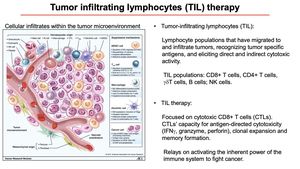The upcoming Bundestagswahl in Germany is generating buzz with the early launch of the Wahl-O-Mat, scheduled for online availability starting on February 8, 2025, prior to the election set for February 23. This online tool, developed by the Federal Agency for Civic Education (bpb), has become invaluable for voters seeking clarity on where political parties stand on various issues.
Since its inception back in 2002, the Wahl-O-Mat has served as a trusted decision-making aid for voters. It presents users with 38 politically relevant statements which they can agree, disagree, be neutral on, or skip. After expressing their views, users can assign different weights to the statements, particularly emphasizing those they prioritize most. The system then calculates the alignment between the user's views and those of the participating parties, presenting this information as a percentage match. This helps voters see which party resonates most closely with their opinions.
The Wahl-O-Mat serves as more than just statistical analysis. It provides detailed explanations of each party's stance, allowing voters to understand the reasoning behind their positions. Participation is broad; all registered parties are invited to join and respond to the statements. The statements themselves are developed by a team composed of youth voters, political scientists, educators, and statisticians, ensuring they cover relevant topics for the electorate.
Interestingly, this election marks the first time voters will face more than just the Wahl-O-Mat. The Real-O-Mat, available from January 29, 2025, is another tool launching alongside it. Unlike the Wahl-O-Mat, the Real-O-Mat assesses how closely users' positions align with actual voting behavior recorded in the Bundestag, providing another layer of insight for voters who may want to weigh campaign promises against legislative actions.
Other alternatives like the Wahl-Kompass and WahlSwiper are also gaining traction. The Wahl-Kompass employs a more detailed five-degree grading system to express agreement or disagreement with political statements. Simultaneously, the WahlSwiper mimics the experience of swiping on dating apps, allowing voters to quickly indicate their positions on various political issues. By simplifying the decision-making process, these tools cater not only to seasoned voters but also to first-time voters who may be overwhelmed by the political spectrum.
With the political climate rapidly changing, many voters exhibit uncertain party affiliations and shifting loyalties. Consequently, these tools—particularly the Wahl-O-Mat—have become even more relevant. Data from the previous Bundestagswahl indicates over 21 million uses of the Wahl-O-Mat, highlighting its popularity and importance as voters increasingly turn to online platforms for guidance.
The significance of these voting aids extends beyond mere numbers. They aim to increase political engagement among younger voters, who are often difficult to reach through traditional means. By tailoring the experience to familiar digital formats, such as swiping or engaging with chatbots, these tools transform the voting process from a burdensome obligation to an interactive experience.
For voters seeking specific insights, platforms like the Steuer-O-Mat and Agrar-O-Mat provide focused analyses tied directly to individual interests, whether fiscal matters or agricultural policies. These targeted tools enable voters to identify which parties align best with these specialized issues, broadening the electoral discussion beyond general party platforms. Such nuanced approaches cater to diverse voter segments, ensuring all concerns are addressed.
Nevertheless, users of the Wahl-O-Mat and its alternatives are urged to remain cautious and informed. These tools are not endorsements but rather guides to help clarify complex political landscapes. The importance of personal research and engages with political content remains indispensable. Voters are encouraged to explore all available resources and to critically evaluate party rhetoric.
At the heart of the election process is the need for informed voting. The state of play is not merely about picking the right party but making educated choices based on comprehensive knowledge of all parties' positions and actions. With such tools at their disposal, voters can transition from uncertainty to informed decision-making.
To help navigate the approaching election, electoral authorities and organizations continue providing updates and resources to engage voters. The countdown is on for the election as the Wahl-O-Mat prepares to become available shortly. This will offer voters another chance to align their choices with the democratic process.



